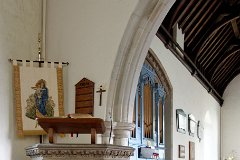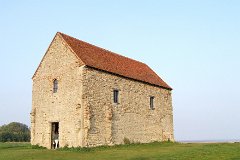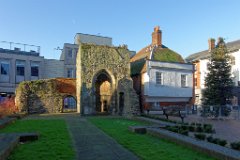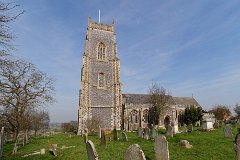84 / 103
Braintree - St Michael
Despite extensive restorations in the 1860s, some older parts of the original church remain, notably the 13th century arcades in the nave and the tower, with its shingled spire. Built from flint and rubble c. 1240 on the site of an earlier Roman settlement or cemetary, the church seems oddly located in terms of the local topography: half-way down the hill on which now stands the centre of modern Braintree. Adding to the uniform and uninspired restoration by Pearson, the council also contributed to the characterlessness of the site by stripping out gravestones and cutting out the higher north-most slope, giving even more the impression of a lost mis-sited church.
The 1977 Council for British Archaeology report went further:
"It is in fact probably the worst disaster area in the Archdeaconry - devastation has been total. The ground around the building is high and has been cut down on the north, where the sunken paths are revetted with tombstones (much broken and decayed). Other headstones have been moved to the boundaries. In all, a text book example of what not to do".















